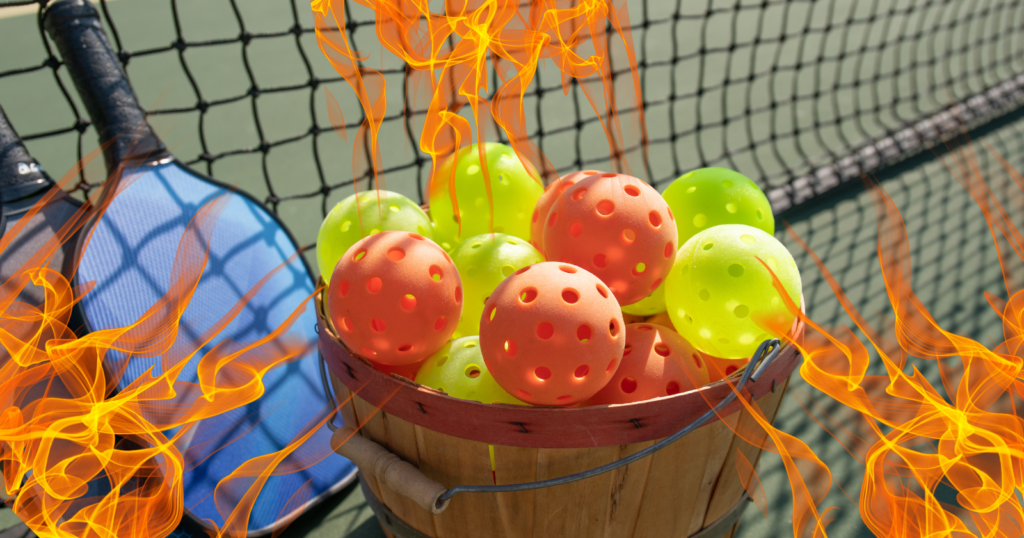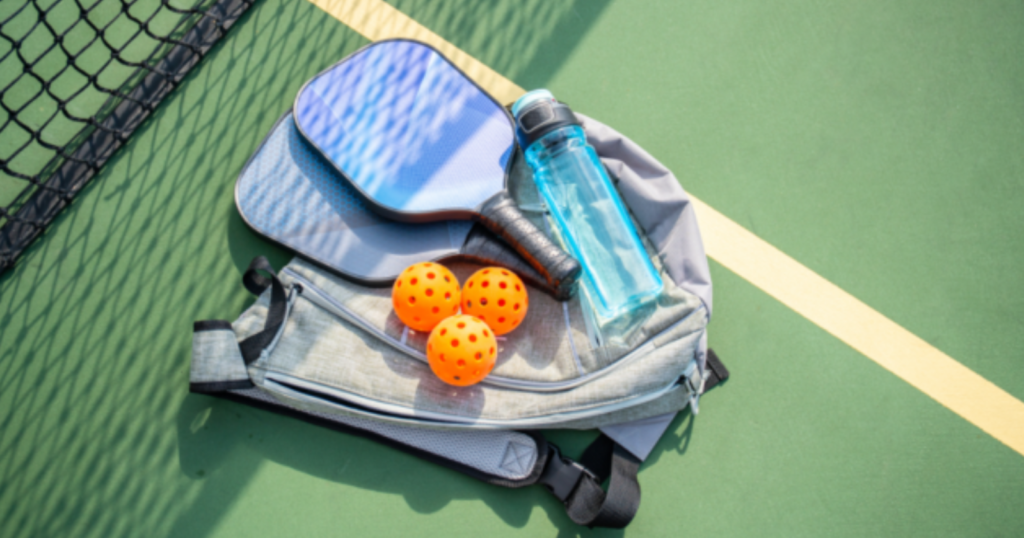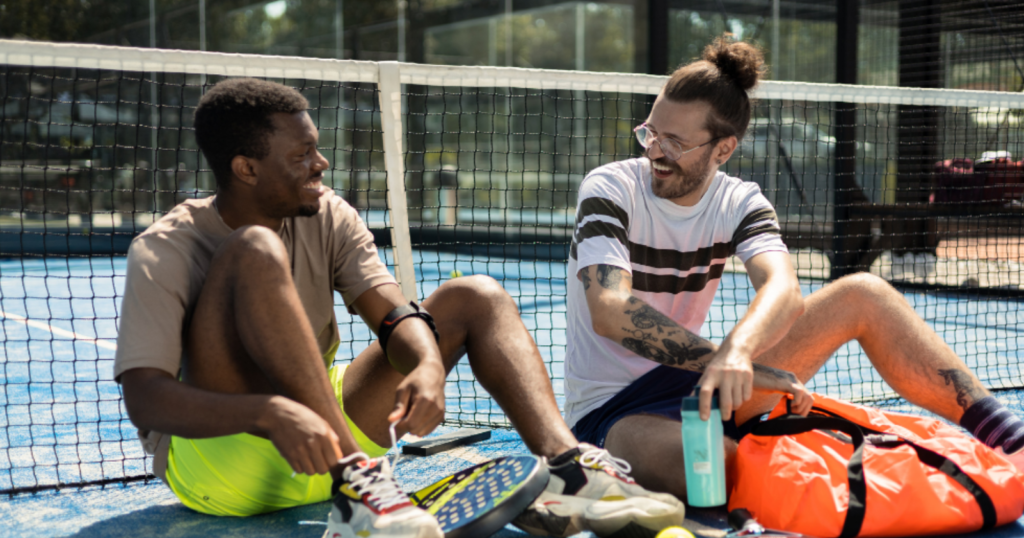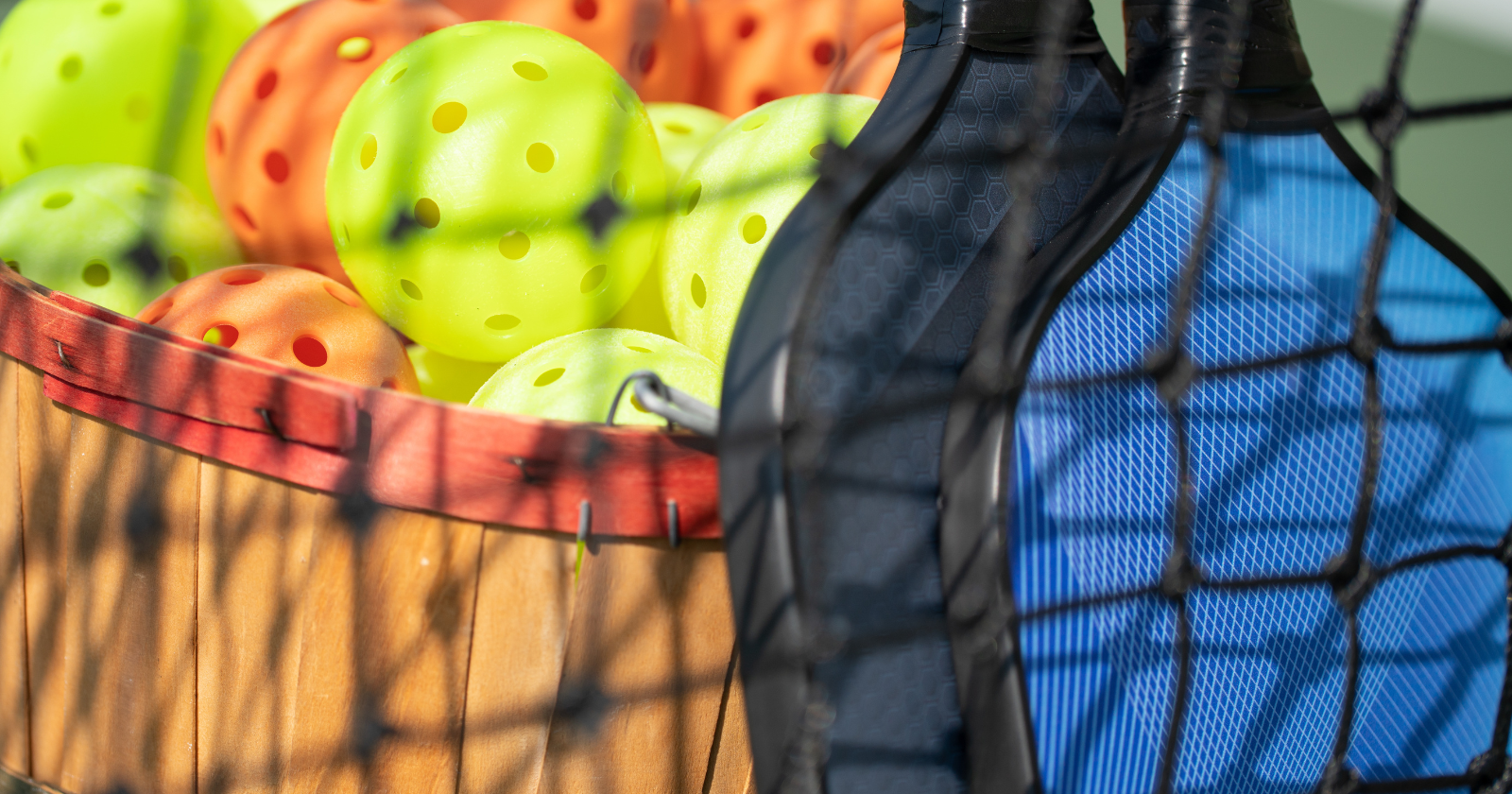If you typed “Pickleball Paddle Guide” or even Pickleball into your search bar, you are in the right place. We have a few tips and tricks to keep your paddle well cared for.
Are you a pickleball enthusiast struggling to keep your equipment in top shape? You’re not alone. Over the years, through trial and error, I’ve learned a thing or two about pickleball paddle care and equipment maintenance. As a teacher in the classroom and on the court, I’m here to educate and share my findings with you.
Here Are A Few Tips From Our Picklepaddle Paddle Guide
Maintaining is not just a random thought. It takes planning and steps to keep your gear in top shape. Proper storage of your paddle is critical, from avoiding extreme temperatures to using the proper covers. Also, pay attention to the grip on your handle and replace it when necessary. In addition, replace old and worn-out balls for better performance. Please read our pickleball paddle guide for more in-depth tips and tricks to maintain your gear.
The tips and tricks we share in this pickleball paddle guide are a huge step to help you understand the importance of maintaining your paddle and gear to last a long time. Together let’s dive into our pickleball paddle guide for tips on how to preserve your gear and your bank account.
Pickleball Paddle Guide To Proper Storage Of Your Paddle
An important part of maintaining your pickleball equipment is proper storage. The way you store your equipment affects its lifespan, so let’s look at a few storage tips to extend the life of your paddle.
Pickleball Paddle Guide To Storing Your Paddles
An often overlooked yet crucial aspect of the game is the proper storage of your paddles. Ensuring your paddles are stored correctly can significantly extend their lifespan and maintain their performance.
In our pickleball paddle guide, we’ll delve into the best practices for paddle storage, providing you with practical and effective strategies to keep your equipment in top-notch condition. Let’s dive in and explore how to give your paddles the care they deserve.

Avoid Extreme Temperatures
Extreme temperatures, both hot and cold, can have adverse effects on your pickleball paddle. High heat can cause your paddle to warp or even melt if it’s made of a plastic-based material. On the other hand, cold temperatures can make the paddle brittle, increasing the risk of cracking or breaking.
Therefore, it’s crucial to store your paddle in a location with a moderate, stable temperature. Avoid leaving your paddle in your car, especially on hot or cold days. In our pickleball paddle guide, we cannot stress enough how important a steady temperature is for the life of your paddle.
Keep Them Dry And Clean
Moisture is another factor that can severely damage your pickleball paddle. Water exposure can lead to the peeling of the paddle surface, and in the case of wooden paddles, it can cause warping and swelling.
Always ensure your paddle is dry before you store it. After a game, wipe down your paddle with a dry cloth to remove sweat and humidity. If your paddle gets wet in the rain, dry it as soon as possible. In our pickleball paddle guide, we like to stress keeping your paddle dry as the second most important step.
Use Paddle Covers
Using paddle covers is a simple and effective method to protect your paddle when it’s not in use. Paddle covers shield your paddle from dust, dirt, and scratches that could otherwise affect the paddle’s surface. They also provide an added layer of protection from accidental bumps and falls.
Opt for a cover that fits your paddle well and is made of durable material to ensure your paddle stays in prime condition for your next game. Remember, our pickleball paddle guide is here to help you maintain your equipment.
Organizing Your Pickleball Balls
Pickleball balls are an intricate part of our pickleball paddle guide, as they come in contact with your paddle all the time. Store them in a cool, dry area, away from direct sunlight, which can warp their shape. A ball holder or bag is a convenient storage solution.
Regular Cleaning And Inspection
Next, in our pickleball paddle guide, we’ll explore the basics of cleaning and inspecting your pickleball equipment, crucial to maintaining optimal performance.
Cleaning Your Pickleball Paddle With Our Pickleball Paddle Guide
Cleaning your pickleball paddle is a crucial part of our pickleball paddle guide and shouldn’t be overlooked. Over time, dirt and sweat can build up on your paddle’s surface, affecting your grip and overall performance.
To clean it our pickleball paddle guide suggests you use a mild, non-abrasive cleanser and a soft cloth or sponge. Gently wipe down the entire surface of the paddle, paying extra attention to the handle where sweat tends to accumulate. After cleaning, always make sure to dry the paddle thoroughly to prevent moisture damage.
Inspecting Your Paddle For Damage
Regularly inspecting your paddle is part of pickleball equipment maintenance. It can help you identify potential issues before they impact your game. Check the paddle’s face for any signs of wear or damage, such as cracks, dents, or peeling.
The edge guard should be securely attached and free of any chips or nicks. Also, inspect the grip for signs of wear or loosening. If you notice any of these issues, consider repairing or replacing the damaged component.
Pickleball Balls
Pickleballs are also a necessary part of your equipment and also need regular maintenance. Let’s briefly look at how to clean and inspect your balls.
Cleaning And Inspecting Pickleballs
Just like your paddle, pickleball balls need regular cleaning and inspection. Clean balls will perform more predictably and last longer. Use warm water and mild soap to gently clean the balls, removing any dirt or debris stuck in the holes.
After cleaning, let the balls air dry. When inspecting the balls, look for any signs of wear, such as cracks, deformities in shape, or any change in the bounce height. If you find any of these issues, it’s time to replace the ball.

Replacing Worn-Out Components
Pickleball equipment maintenance also involves replacing worn-out parts to ensure optimal performance.
Changing Your Paddle Grip
Your paddle grip is integral to your control and comfort during games. You must check your grip as part of pickleball equipment maintenance. Over time, the grip may become worn out, lose its traction, or become less comfortable due to sweat and repeated use. When this happens, you’ll want to replace it.
Start by removing the old grip carefully. Then, choose a new grip that suits your preference for thickness, texture, and cushioning. When applying the new grip, start from the butt end of the handle, and wind it toward the top, ensuring it’s snug and smooth without any creases.
Replacing Damaged Pickleball Balls
Replacing damaged balls is a key part of equipment maintenance. Damaged balls can significantly alter the game, affecting the ball’s bounce and travel speed. When you notice any cracks, warping, or deformation in the ball, or if the holes become enlarged, it’s time for a replacement.
Remember to dispose of your old balls responsibly, and consider buying your new balls in bulk, as it’s usually more cost-effective. It’s also a good idea to have a few spare balls handy so you don’t have to interrupt your game if a ball gets damaged.
Proper Court Etiquette For Equipment Longevity
Our pickleball paddle guide would not be complete without some good court etiquette in the mix.
Respect The Court
Respecting the court doesn’t just mean being courteous to other players but also taking care not to damage the court your paddle. Avoid dragging your paddle or scuffing your shoes on the court surface, as this can cause unnecessary wear to your equipment. Furthermore, rough court surfaces can also lead to premature wear on pickleball balls.
Avoid Hitting Hard Surfaces
It can be easy to get carried away in the heat of the game, but remember that your paddle is designed to hit the ball and not hard surfaces like the net, posts, or ground. Hitting hard surfaces can cause dents, cracks, or other damage to your paddle and shorten its lifespan significantly.
It’s also not a good idea to use your paddle to scoop up balls from the ground; instead, bend down and pick them up.
Keep Food And Drink Away From The Court
While it’s essential to stay hydrated, especially during longer games, try to keep food and beverages away from the court. Spilled drinks can make the court slippery and dangerous, and crumbs or bits of food can attract insects or birds. More importantly, spills can also damage your equipment. If you need to take a sip, step off the court to do so.
Avoiding Unnecessary Paddle Contact
Avoid hitting your paddle on the ground or other objects, as it can cause damage. This is essential to our pickleball paddle guide. Practice controlled swings to minimize paddle wear.

FAQ Section For Our Pickleball Paddle Guide
In our ongoing effort to serve the pickleball community, we’ve compiled some of the most frequently asked questions regarding our pickleball paddle guide. These answers will provide further clarity and help you in your quest to keep your gear in top shape.
When Should I Replace My Pickleball Balls?
Replace Pickleball balls when they show signs of wear, such as cracks, or when they’re no longer round due to warping. Also, if the bounce height decreases significantly or the holes become enlarged or deformed, it’s time for a replacement.
How Often Should I Clean My Pickleball Paddle?
You should clean your pickleball paddle after every game. A quick wipe-down with a damp cloth can remove dirt, sweat, and grime that accumulate during play. For stubborn stains, use a gentle cleaner. Remember to let your paddle air dry before storing it.
Can I Use My Pickleball Paddle in Any Weather?
While pickleball paddles are designed to be durable, extreme weather conditions can affect their lifespan. Avoid using your paddle in extreme cold or hot temperatures, and never leave it in direct sunlight. Always dry off your paddle if it gets wet, and avoid using it in the rain.
Pickleball Paddle Guide – Conclusion
Pickleball equipment maintenance is essential for every player looking to improve their game and prolong the life of their gear. By following the tips provided in this post, you can ensure that your equipment stays in top shape.
Remember to store your gear properly, clean and inspect it regularly, replace worn-out components, and practice good court etiquette. Your dedication to pickleball equipment maintenance will pay off in better performance and longevity.

